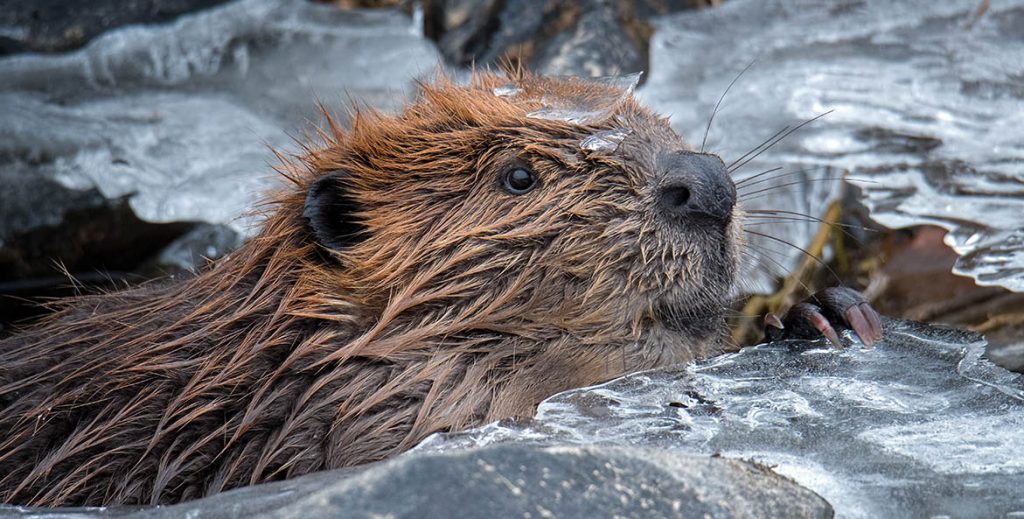Beavers are large, semi-aquatic rodents that are found throughout North America and parts of Europe and Asia. They are known for their unique ability to build dams and lodges using branches, logs, and mud. Beavers play an important role in the ecosystem, providing habitat for fish, birds, and other wildlife. In this article, we will provide a detailed description of the anatomy of a beaver.

General Characteristics
Beavers are the second largest rodents in the world, after the capybara. They have a stocky, barrel-shaped body that is covered in dense, waterproof fur. Their fur can be either brown or black, and it is made up of two distinct layers: a soft undercoat and a coarser outer layer. This double-layered fur helps to keep beavers warm and dry in the water.
Beavers have large, webbed hind feet that are adapted for swimming. Their front feet are smaller and more dexterous, with sharp claws that they use for gripping and cutting. Their tail is flat and paddle-shaped, and it is covered in scales and short, stiff hairs. Beavers use their tail as a rudder when swimming and as a tool for slapping the water to signal danger.
Skull and Teeth
The beaver’s skull is broad and flat, with powerful jaws and large incisors. The incisors are the beaver’s most distinctive feature, and they are responsible for the beaver’s ability to gnaw through wood. The incisors are long and sharp, and they grow continuously throughout the beaver’s life. As the beaver uses its teeth to gnaw on wood, the teeth wear down, but they are constantly replaced by new growth.
The beaver’s teeth are also unique in that they are orange in color. This is due to the presence of iron in the teeth, which helps to strengthen them and make them more resistant to wear and tear. The iron in the teeth also helps to prevent decay, allowing the beaver to consume a diet that is high in sugar and starch.
Muscles and Skeleton
Beavers have powerful muscles that are adapted for swimming and for dragging logs and branches. Their hind legs are especially strong, with powerful quadriceps and hamstrings that allow them to paddle through the water. Their front legs are smaller, but they are still strong and dexterous.
The beaver’s skeleton is adapted for its semi-aquatic lifestyle. Its bones are dense and heavy, which helps to provide ballast for diving. The beaver’s ribs are flat and wide, which helps to protect its internal organs while swimming. Its vertebrae are also fused together, which provides additional support for its heavy body.

Digestive System
Beavers are herbivores, and they mainly consume the bark, twigs, and leaves of trees and shrubs. They have a complex digestive system that is adapted for processing tough plant material. The beaver’s stomach is divided into four chambers, which allows for the slow, efficient breakdown of cellulose.
The beaver’s cecum is also particularly large and specialized. The cecum is a pouch located at the beginning of the large intestine, and it contains bacteria that help to break down cellulose and extract nutrients from plant material. This fermentation process produces volatile fatty acids, which the beaver can absorb and use as a source of energy.
Reproductive System
Beavers are social animals that mate for life. They typically form monogamous pairs, and both the male and female play a role in raising their offspring. Beavers give birth to their young in a lodge, which provides protection from predators and the elements.
Female beavers have a gestation period of 105-107 days and typically give birth to 1-6 kits per litter. The kits are born with their eyes closed and are covered in downy fur. They rely on their mother’s milk for the first few weeks of their life, after which they begin to consume solid food.

The anatomy of a beaver is fascinating and complex, with a range of adaptations that are unique to its semi-aquatic lifestyle. Beavers are known for their distinctive incisors and their powerful muscles, which allow them to swim, gnaw through wood, and drag logs and branches. They also have a complex digestive system that is adapted for processing tough plant material, and they form monogamous pairs and mate for life. By understanding the anatomy of a beaver, we can appreciate the many ways in which this remarkable animal has adapted to its environment.